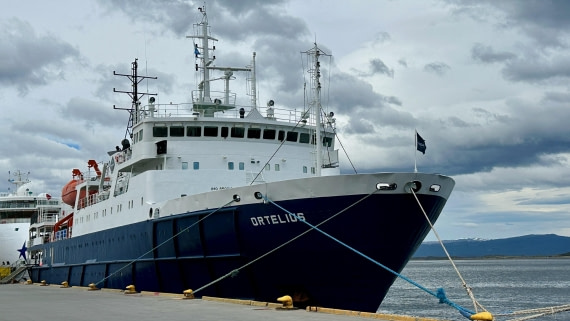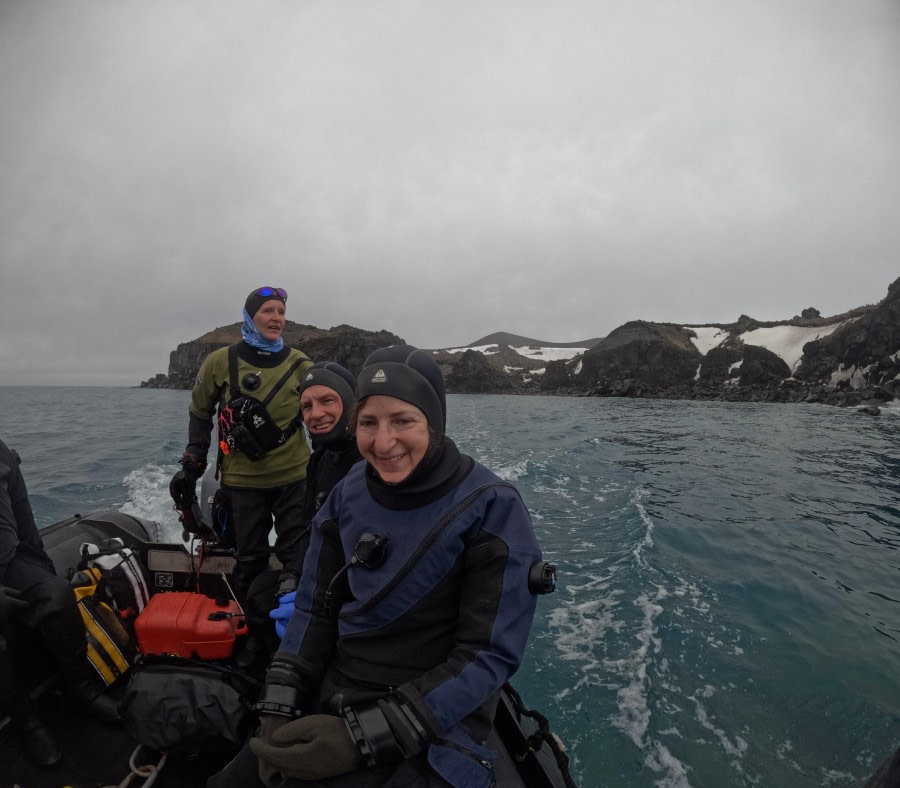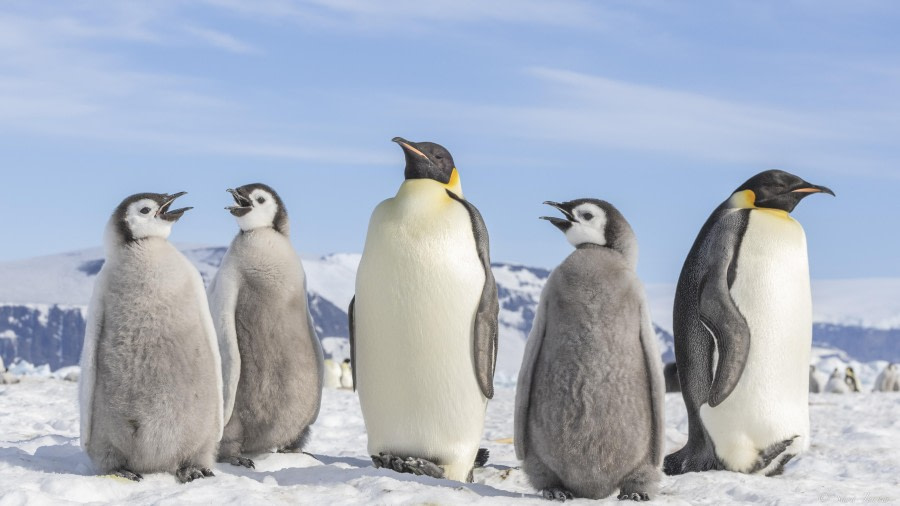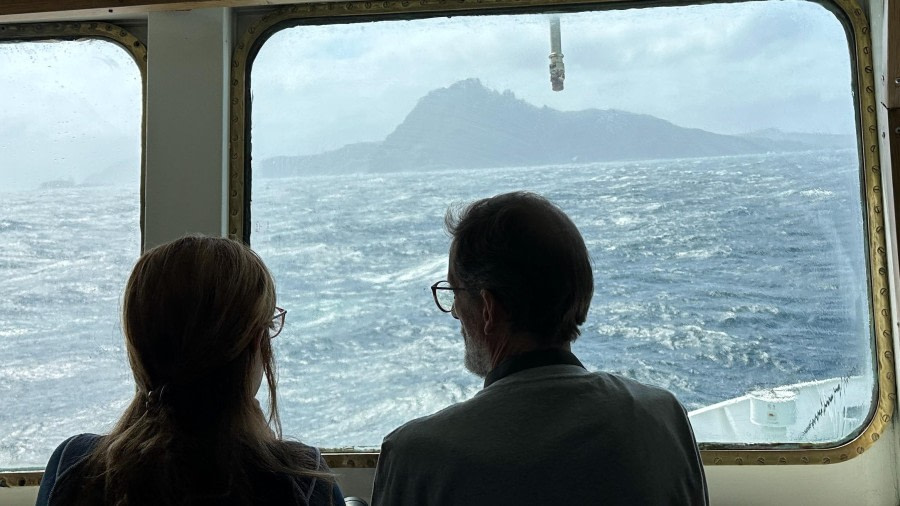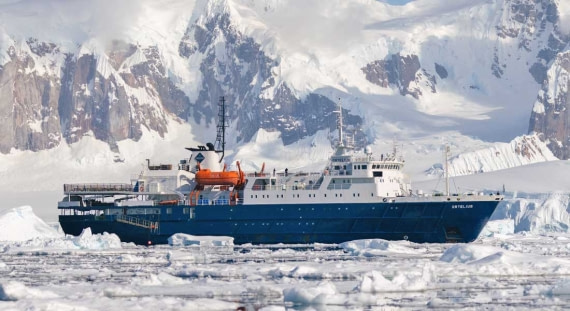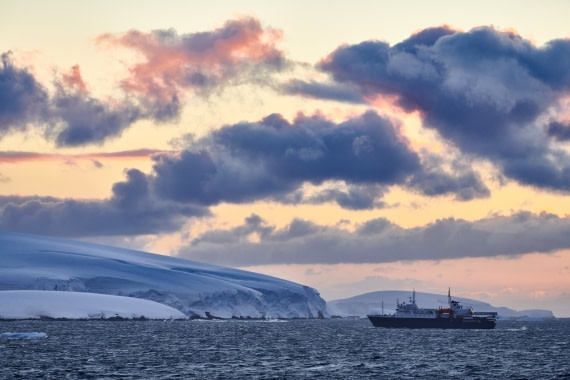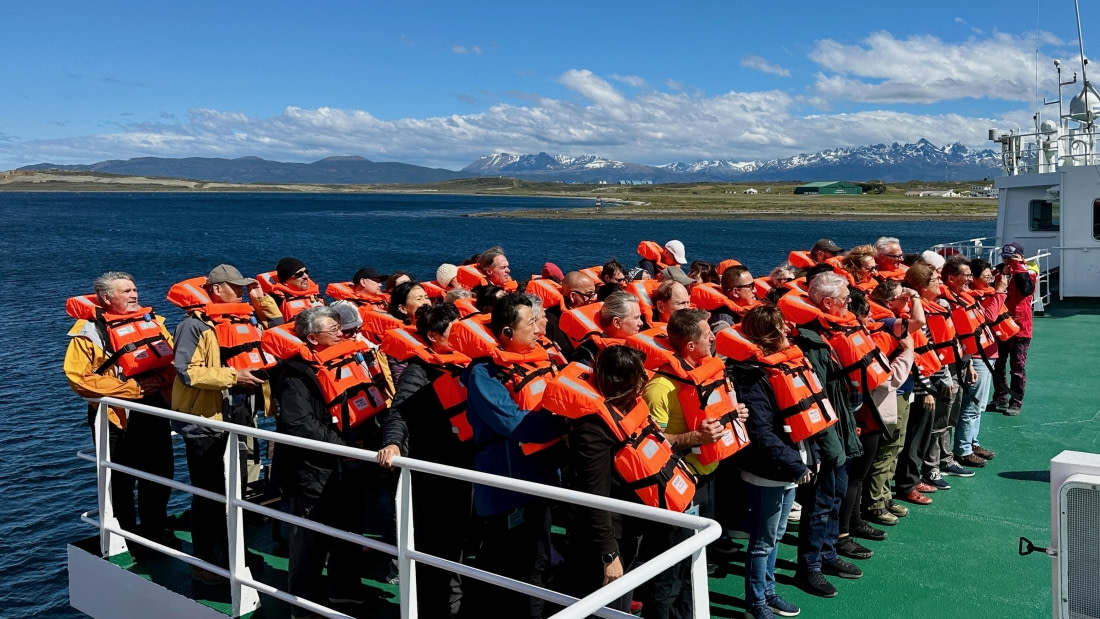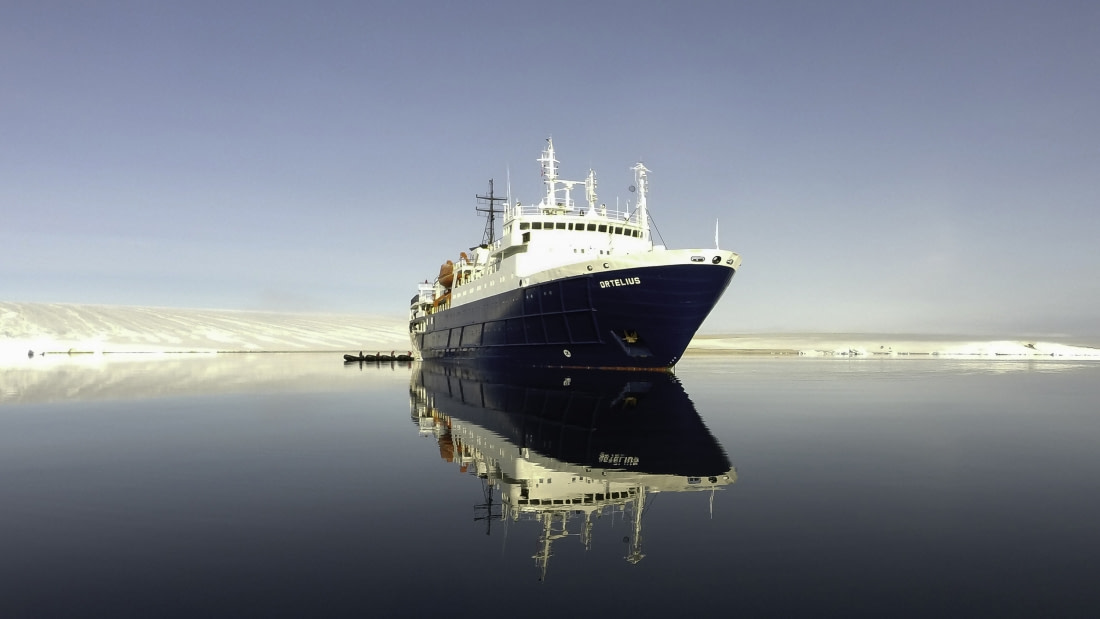| Datum: | 20.11.2024 |
| Position: | 54°48.6’S / 068°17.8’W |
| Wind: | W force 2 |
| Wetter: | Clear |
| Lufttemperatur: | +12 |
The day had finally come! It was time to board the good ship Ortelius for our Antarctic expedition to search for emperor penguins! It was a warm day in Ushuaia and the surrounding scenery of snow-encrusted mountains was spectacular. A few early arrivals wandered around the dock waiting for embarkation time. They could see a helicopter sitting on Ortelius’ flight deck, one of three that would be sailing with us. The one on deck was callsign CC-CHQ, otherwise known as ‘Quebec’. Two more helicopters, LV-CUT - ‘Tango’ and LV-CUS – ‘Sierra’ were tucked up in the adjacent hangar with the blades removed. The crew and Expedition Team had loaded our luggage onboard and delivered it to our cabins earlier in the day. All that remained was for us to take a few photos of Ortelius, our home for the next ten days, before heading up the gangway.
We were warmly welcomed by the crew and Expedition Team who assisted us in finding our cabins. We had some time to explore the ship, get our bearings and grab a coffee in the bar. Everyone was on board by 14:45. Then, it was time to gather in the lecture room for the mandatory ship safety briefing. Once complete, we could sail, and we wanted to get going as soon as possible. We met Expedition Leader Sara Jenner, and heard from Safety Officer Martin Hansson, who gave a practical demonstration on how to put on our emergency life jackets. Next it was time for an abandon ship drill. We went to our cabins and upon hearing the general alarm, got our lifejackets, and went to our muster station in the bar. From there we were guided to our lifeboats, so we knew where to go in case of a real emergency.
As we made our way out to the lifeboats, Captain Per pulled Ortelius away from the dock and got us under way. We departed Ushuaia at precisely 15:10. A wave of excitement ran through the ship as everyone realised that our long-awaited and much-anticipated voyage had finally begun. With the drill completed, many of us lingered on the outer decks to enjoy the glorious scenery of the Beagle Channel as Ortelius was brought up to full speed. At 16:20 Captain Per invited us to join him in the bar for champagne and canapés, to raise a glass and toast the voyage ahead. This was followed by an introduction to shipboard services by Hotel Manager Volodymyr, and an overview of our expedition by our illustrious leader Sara. Before this concluded we met the Expedition Team.
With briefing formalities concluded, it was time for our first evening meal, with a delicious buffet selection prepared by Head Chef Ivan and his galley team, served by the ever-friendly dining room staff. After dinner we were called back to the bar so that two more mandatory briefings could be delivered. Because 100% attendance is required, these briefings were done while Ortelius was still in the sheltered waters of the Beagle Channel. Expedition Leader Sara first briefed us on the Antarctic Visitor Guidelines, as laid down by IAATO – the International Association of Antarctic Tour Operators – of which Oceanwide is a founding member. And then Sara gave us the Zodiac Safety Briefing. How lucky we were to have both Zodiacs and helicopters at our disposal on this exciting voyage. During the briefings, a pilot boat came alongside, and the Ushuaia harbour pilot was disembarked.
After a long and exciting day, it was time for bed and some well-earned rest. What would tomorrow bring? As the sun dipped below the horizon, the first bit of “ocean motion” was felt. It was very gentle, but it reminded everyone that we were leaving the sheltered waters of the Beagle Channel and heading out into the mighty Southern Ocean. The infamous Drake Passage lay ahead. We hoped (some prayed) that it would be kind.


